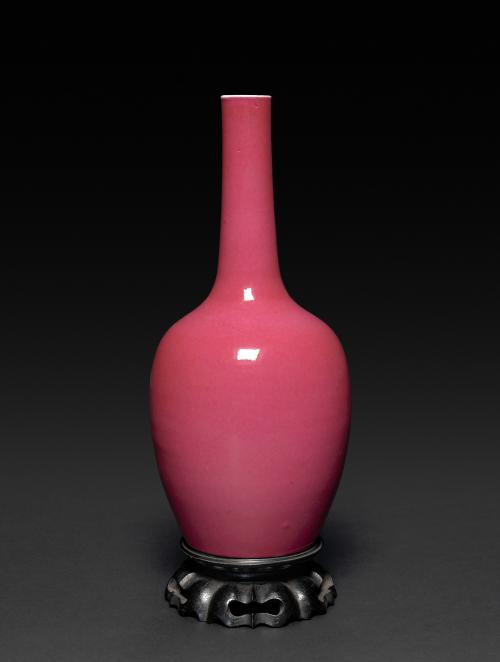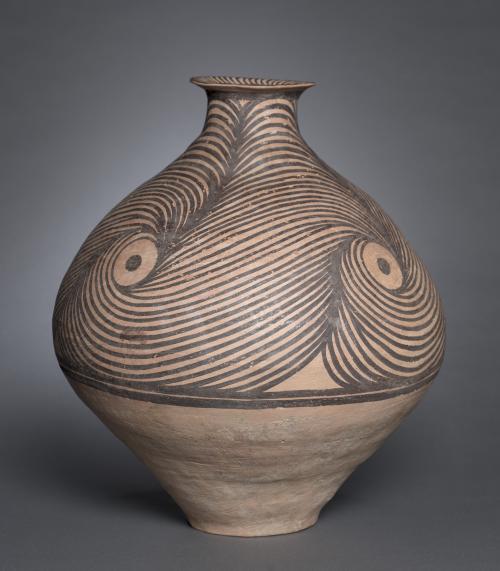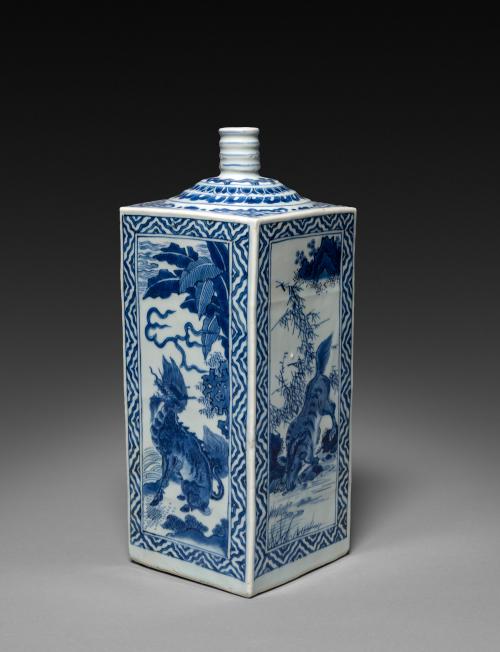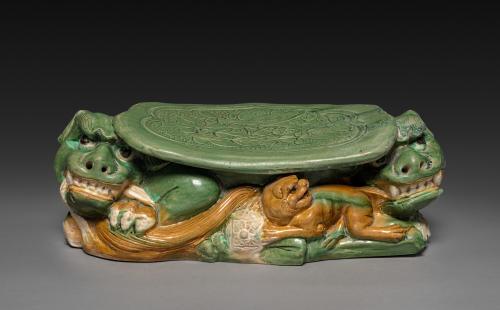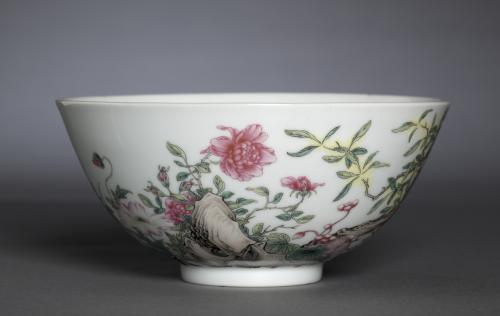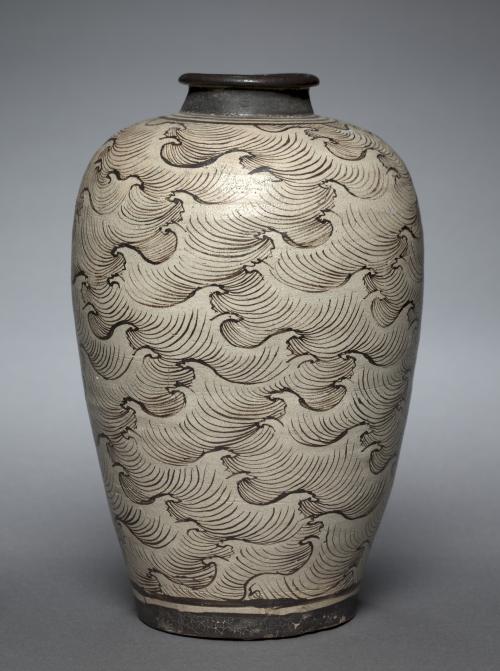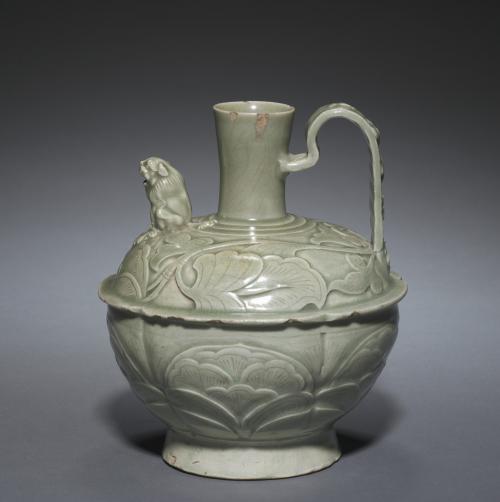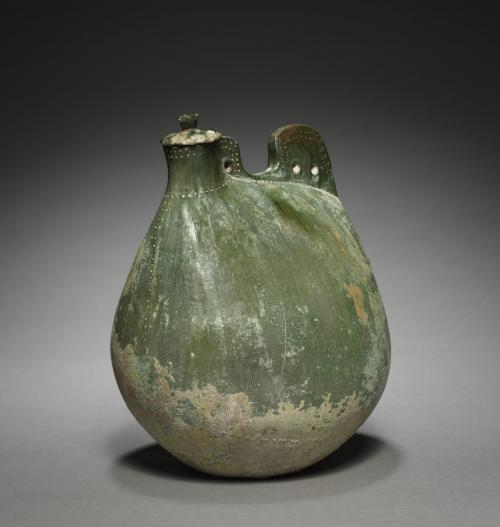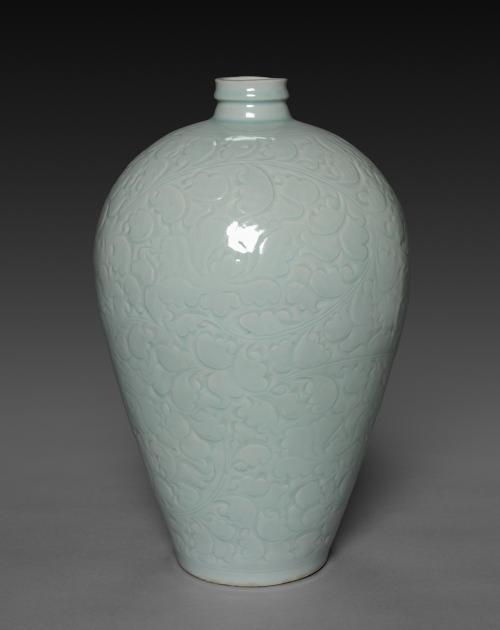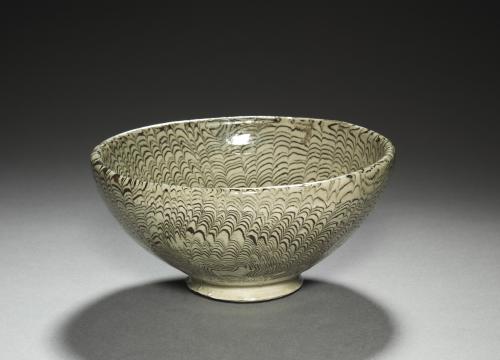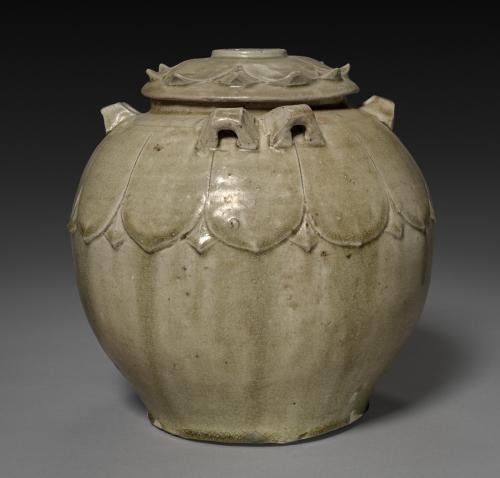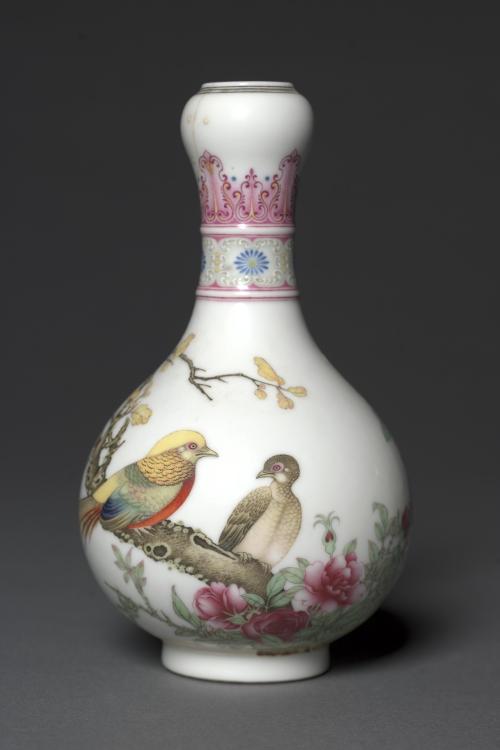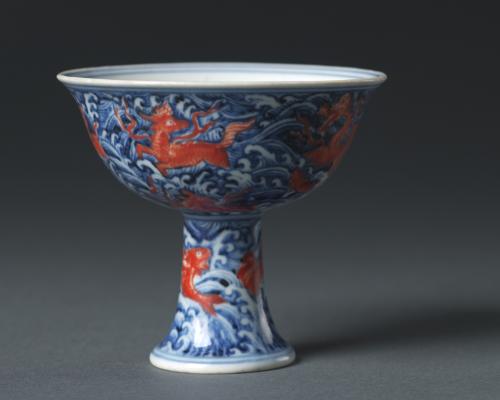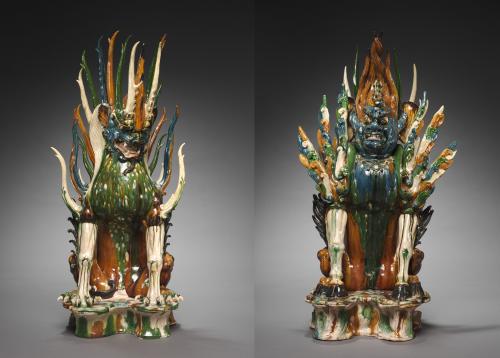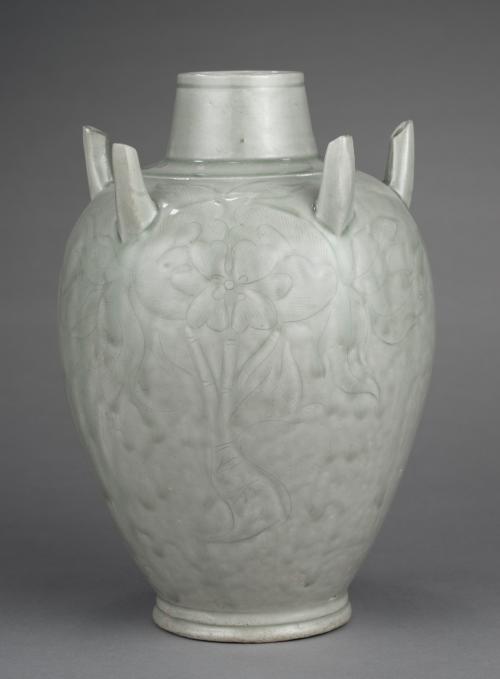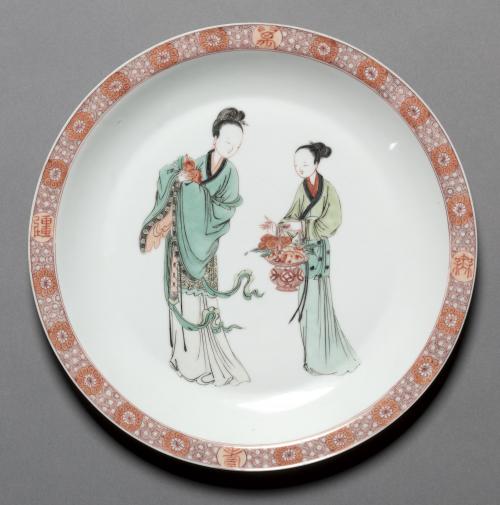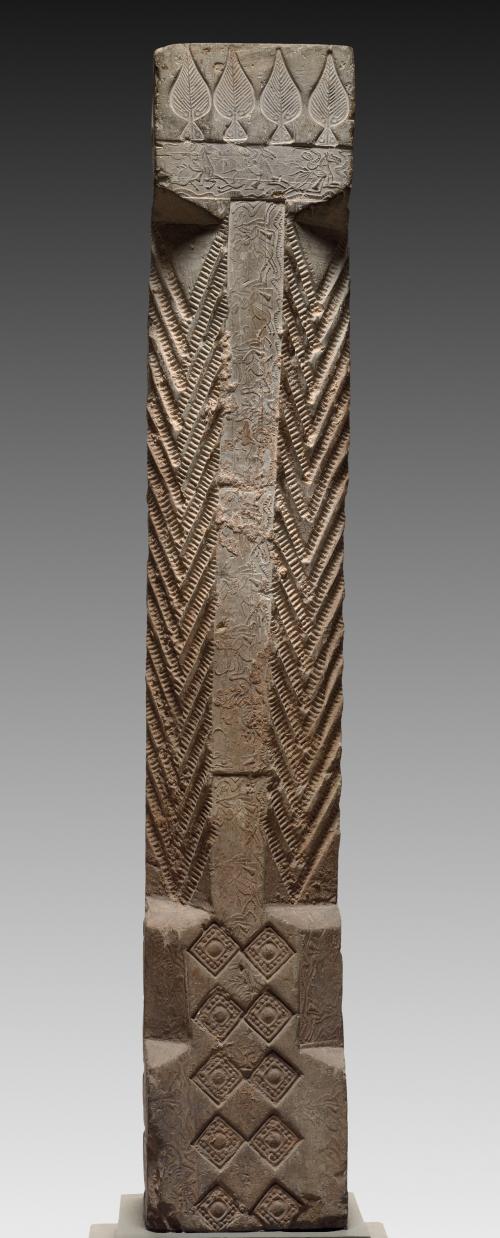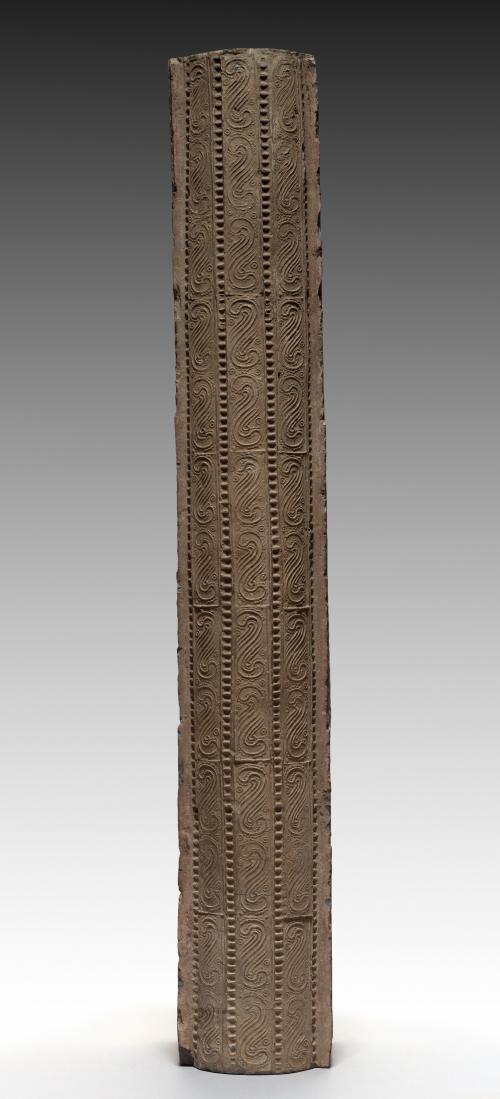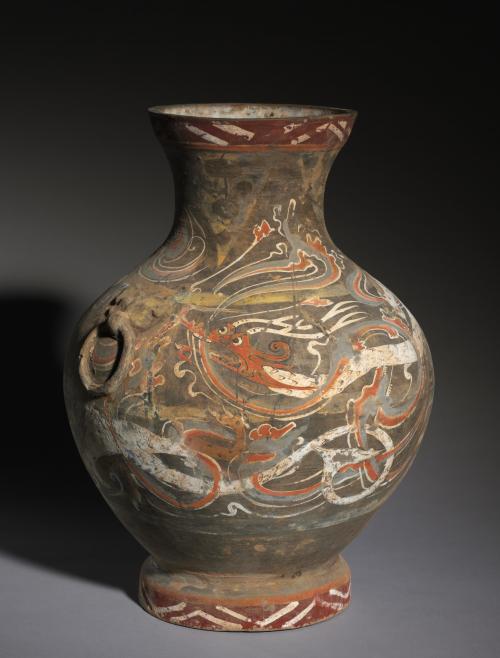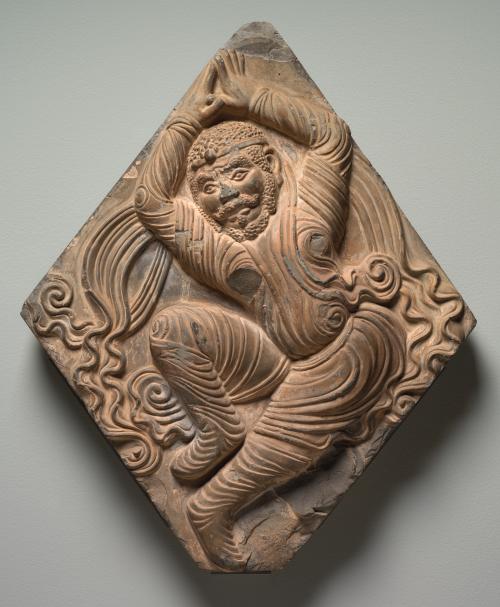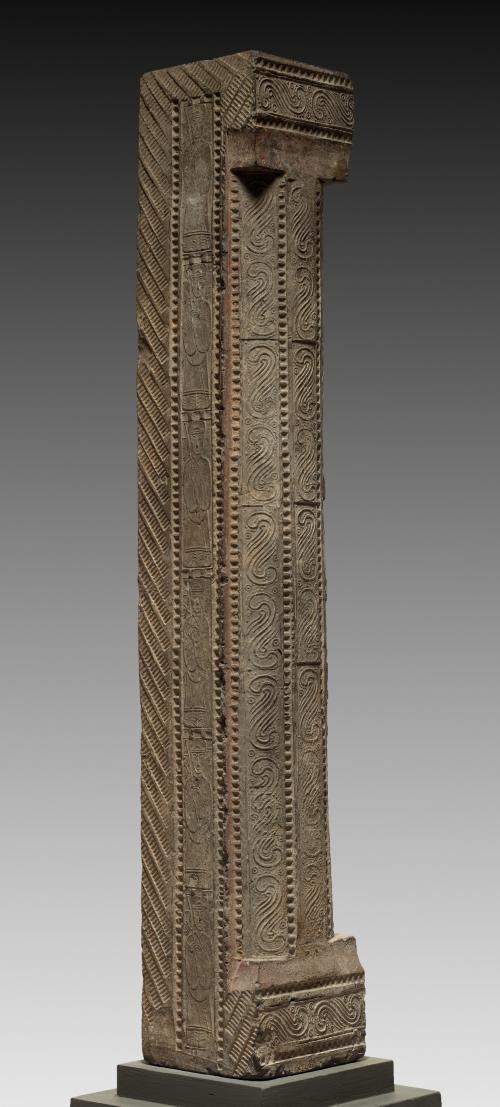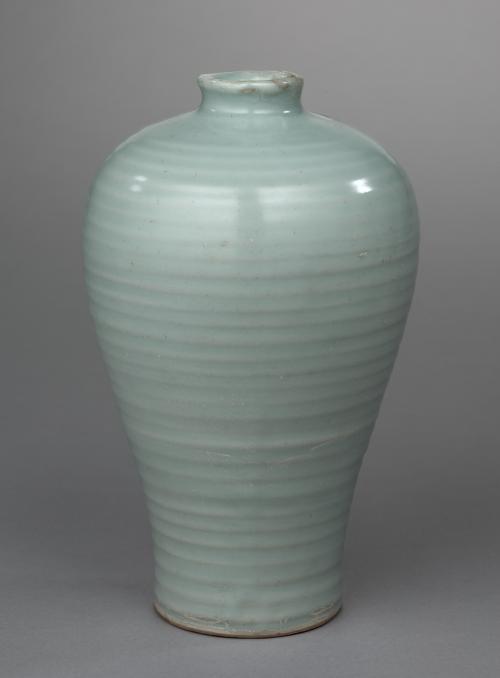全部藏品
探索585個藏品
Vase
The Cleveland Museum of Art
An 18th-century Korean collector Yu Man-joo (1755–1788) wrote that “spending money on luxury clothing, dishes, and decorations for the home is a waste
Jar with Spiral Designs
The Cleveland Museum of Art
This jar is a spectacular example of painted pottery from the Majiayao culture, one of the regional cultures of prehistoric China.
Transitional Blue-and-White Square Bottle
The Cleveland Museum of Art
The shape of this flask derives from European gin bottles.
Headrest with Three Lions
The Cleveland Museum of Art
Three lions—two ferocious adults and one playful cub—form the base of this Chinese headrest.
Bowl with Poppies, Tree Peony, and Flowering Mimosa
The Cleveland Museum of Art
Developments in enamel technology led to new possibilities in polychrome decoration.
Vase (Meiping) with Waves
The Cleveland Museum of Art
Jizhou ware characteristically shows the use of slip coating, bold designs, and color contrasts to achieve stunning visual effects.
Ewer with a Lion-shaped Spout
The Cleveland Museum of Art
This remarkable ewer is most likely a very early and rare type of Yaozhou ware, with the shape and decoration recalling Tang metal ware.
Leather Bag-Shaped Flask with Cover
The Cleveland Museum of Art
Flasks like these derive their shapes from leather bags; even the edges are finely rouletted to resemble the seams of sewn leather.
Meiping Vase with Carved Floral Sprays
The Cleveland Museum of Art
This magnificent plum vase (meiping) derives its name from being used to hold a branch from a flowering plum tree.
Marbled Bowl
The Cleveland Museum of Art
This bowl was potted using the marbling technique called jiaotai (mixed clay), whereby light- and dark-colored clays are combined to create natural pa
Covered Jar with Carved Lotus Petals
The Cleveland Museum of Art
This jar still has its original cover, which is rare among surviving examples. Its missing knob most likely had the shape of a lotus bud.
Vase with Golden Pheasants
The Cleveland Museum of Art
The flower-and-bird painting in this vase was intricately executed in colored enamels (falangcai), with careful modeling, shading, and blending of col
Cup and Stand
The Cleveland Museum of Art
The kilns of Jingdezhen in Jiangxi province produced an extremely delicate porcelain made from the local resources of kaolin (white China clay) and pe
Stem Cup
The Cleveland Museum of Art
These two Ming imperial wares [1957.60 and 1957.61] are among the smallest, but most precious, of the museum's holdings in Chinese ceramics.
Tomb Guardians
The Cleveland Museum of Art
With their fierce expressions and exaggerated physical features, these two fantastic guardian creatures were intended to guard the entrance to a tomb,
Bowl with Decoration of the "Three Friends"
The Cleveland Museum of Art
Pine, bamboo, and plum blossom are known as the “Three Friends” of winter as metaphors of the scholar-gentleman’s ideal of integrity, endurance, lofti
Vase with Peonies and Five Spouts
The Cleveland Museum of Art
"In full autumn wind and dew the kilns of Yue open; And a thousand peaks are despoiled of their halcyon green" (translated by S. W.
Dish with Female and Attendant
The Cleveland Museum of Art
On the flattened rim of this dish is a band of ironred enamel decoration with the Chinese characters Wanshou wujiang, meaning "Long life without
Hollow Tile: Column from Tomb-Chamber Doorway
The Cleveland Museum of Art
Striding tigers (top), racing horsemen (right column), and reverent officials (left column) are stamped into the surface of this underground portal to
Hollow Tile: Lintel from Tomb-Chamber Doorway
The Cleveland Museum of Art
Striding tigers (top), racing horsemen (right column), and reverent officials (left column) are stamped into the surface of this underground portal to
Jar (Hu)
The Cleveland Museum of Art
Instead of depicting a real landscape, the artist focused on the rhythmic forces of nature and the movement of energy, using the scrolling form as a s
Architectural Brick with Dancer in Relief
The Cleveland Museum of Art
This brick originally formed part of the exterior wall of the pagoda at the Xiudingsi Buddhist monastery near Anyang, Henan province.
Hollow Tile: Column from Tomb-Chamber Doorway
The Cleveland Museum of Art
Striding tigers (top), racing horsemen (right column), and reverent officials (left column) are stamped into the surface of this underground portal to
Vase (Meiping)
The Cleveland Museum of Art
The Longquan potter applied many coats of glaze and allowed each to dry before adding another. With

